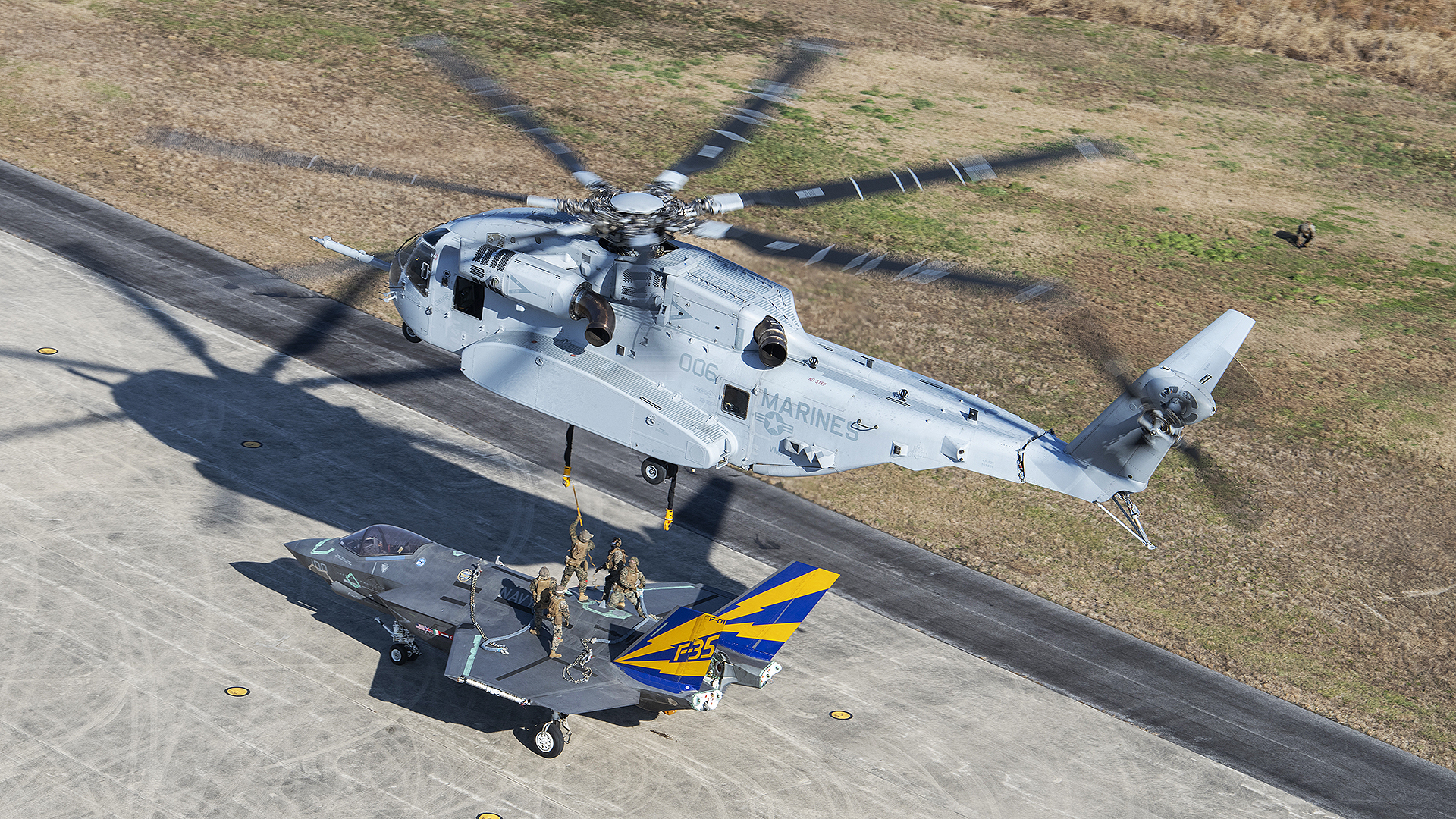The U.S. Marine Corps’ (USMC) newest helicopter, the heavy-hauling CH-53K King Stallion, successfully lifted a U.S. Navy F-35C Lightning II Joint Strike Fighter in December of last year. Details on the demonstration, as well as accompanying images, were released by the Department of Defense on January 23.
The exercise took place at Naval Air Station Patuxent River, Maryland. This involved a CH-53K helicopter belonging to USMC Operational Test and Evaluation Squadron One (VMX-1) lifting the Navy’s first F-35C prototype, ‘CF-01,’ or ‘CF-1.’ CF-01 made its debut back in 2009 and took its first flight in 2010. While the CH-53K is capable of lifting aircraft, this appears to be the first time the helicopter has lifted an F-35 fighter of any variant.
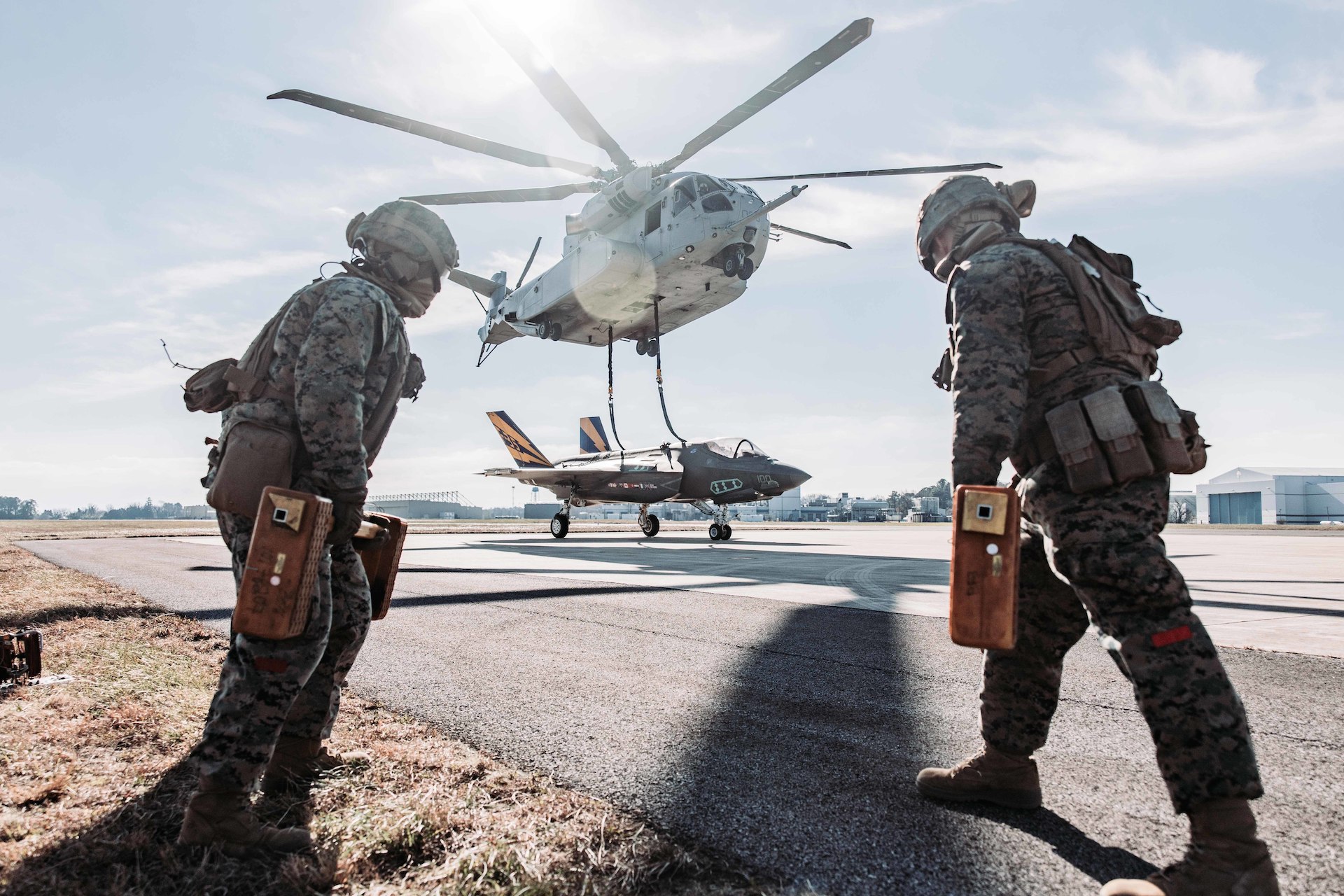
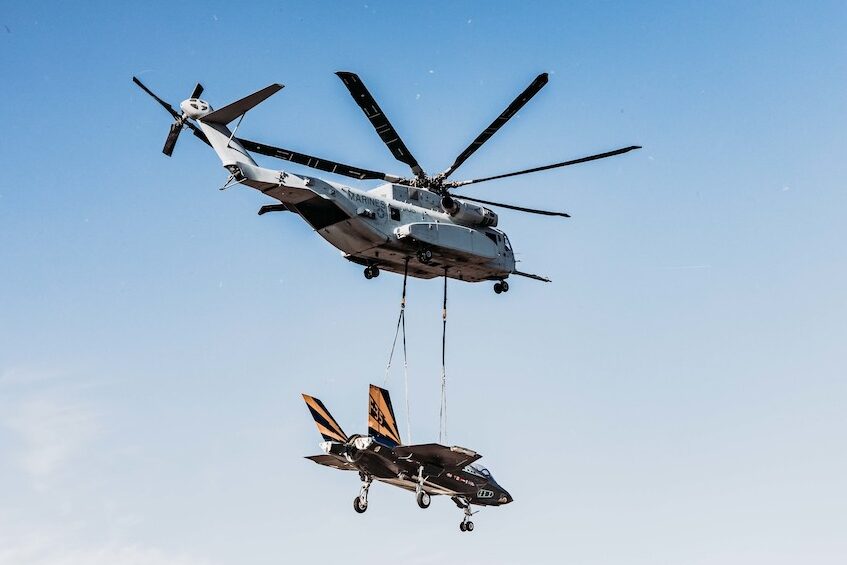
Marines with Combat Logistics Battalion 24 (CLB-24) helped conduct the exercise, which was designed to help develop tactics, techniques, and procedures (TTP) for CH-53K King Stallion “helicopter support team operations.”
In the images, we see Marines with CLB-24 readying F-35C CF-01 for transport by attaching chains and other rigging to its airframe. The F-35C is then hooked to the CH-53K before the helicopter lifts the jet into the air.
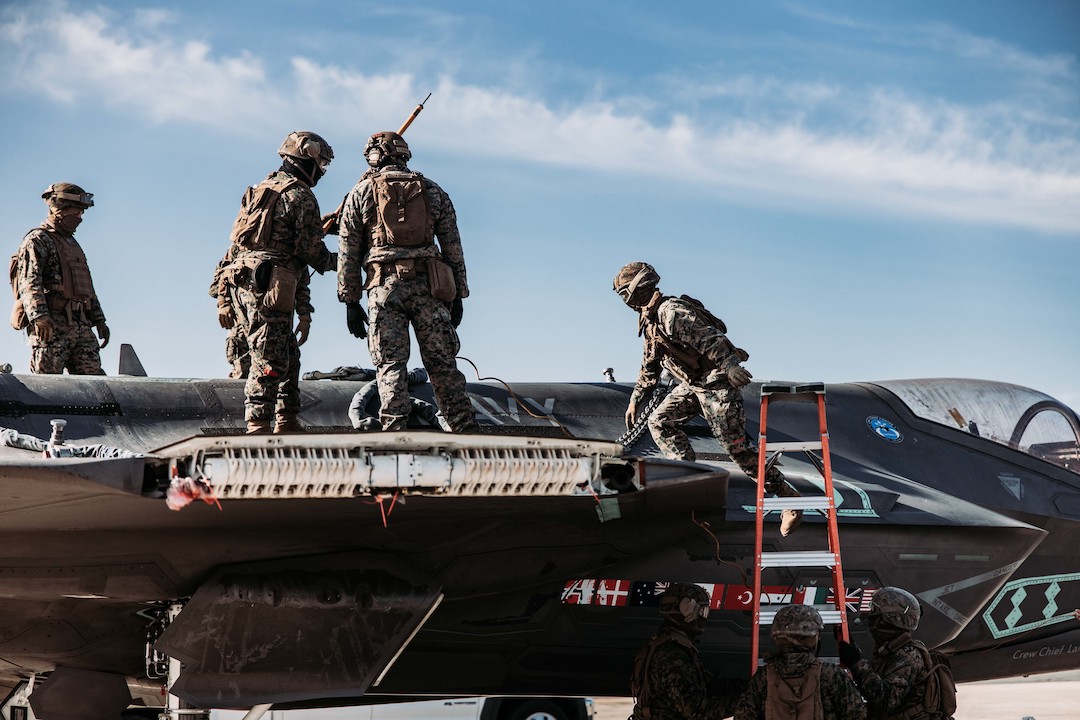
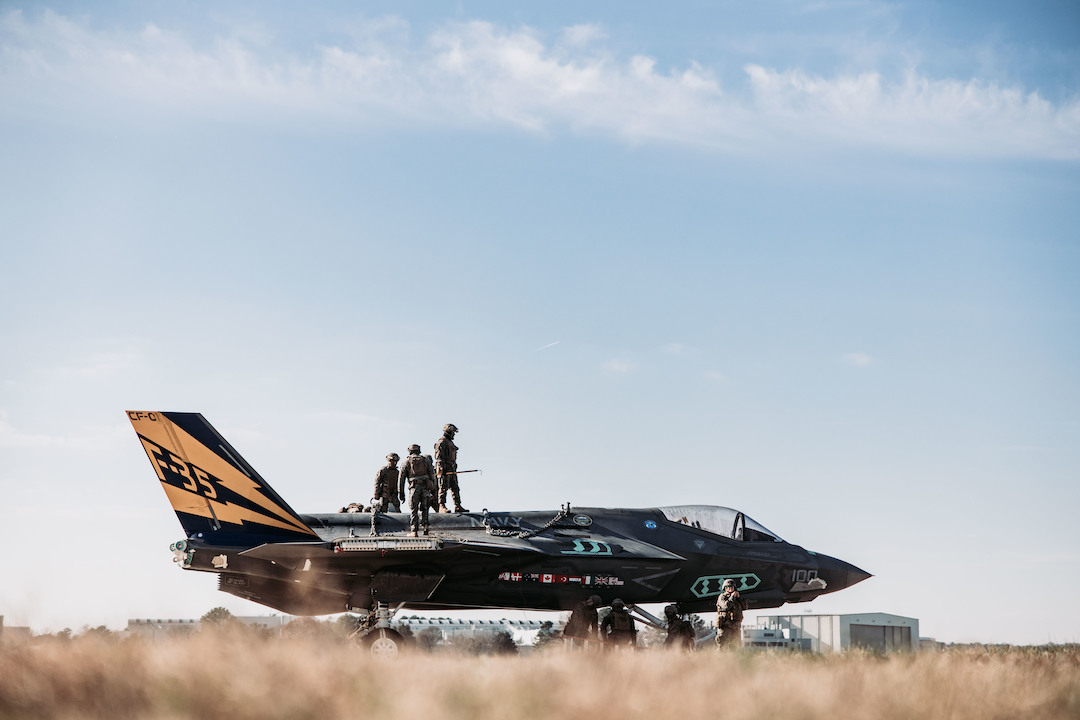
After conducting the exercise, Marines with CLB-24 posed for photos with CF-01.
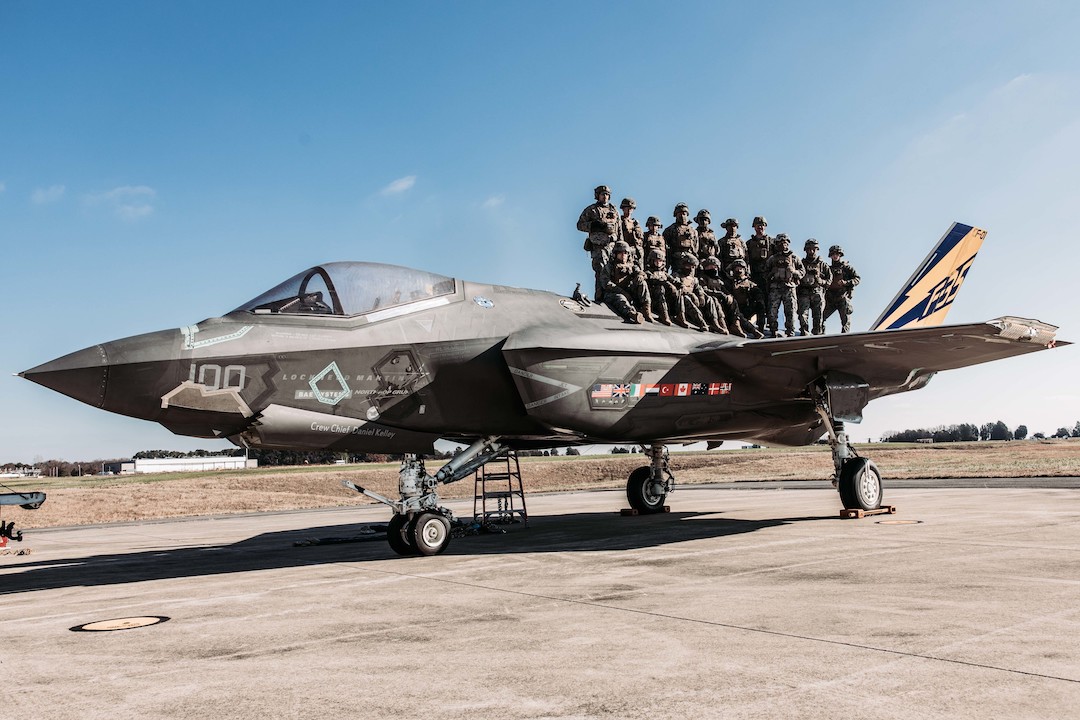
Chosen to replace the Marine Corps’ aging and increasingly unreliable fleet of CH-53E Super Stallion helicopters manufacturer by Sikorsky (now a subsidiary of Lockheed Martin) which entered service back in 1981, the CH-53K program has suffered its share of delays and setbacks. In development since 2006, the USMC originally expected to reach initial operational capability with the King Stallion (also manufactured by Sikorsky) in 2015, but this was steadily pushed back.
The USMC took delivery of the first CH-53K in May 2018, and in April 2022 the service announced that the first CH-53K was operational. In December 2022, the Navy announced that Sikorsky was cleared to begin full-rate production of the helicopter.
All told, the USMC plans to purchase 200 CH-53Ks. Naval Air Systems Command (NAVAIR) indicates that the aircraft should declare full operational capability in Fiscal Year 2029.
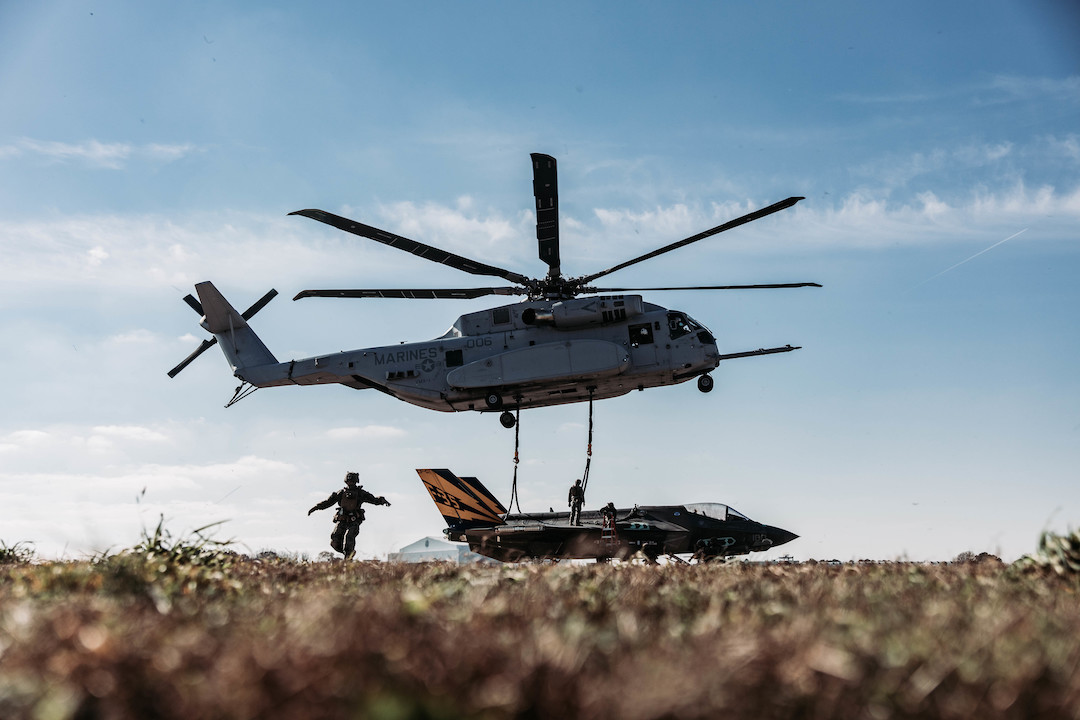
The new photos are yet another demonstration of the CH-53K’s heavy-lifting capability. According to Sikorsky, the helicopter — which is the largest single-main-rotor helicopter in the U.S. military arsenal — has a maximum payload capacity of 36,000 pounds. This, the company says, means it can lift many types of vehicles, from Joint Light Tactical Vehicles (JLTV) to Light Armored Vehicles (LAV). The Lockheed Martin-manufactured F-35C, used by the U.S. Navy and the USMC, has an empty weight of 34,800 pounds. Given that the F-35C CF-01 lifted by the CH-53K is at least partially gutted, the jet’s weight would have been lower than that figure.
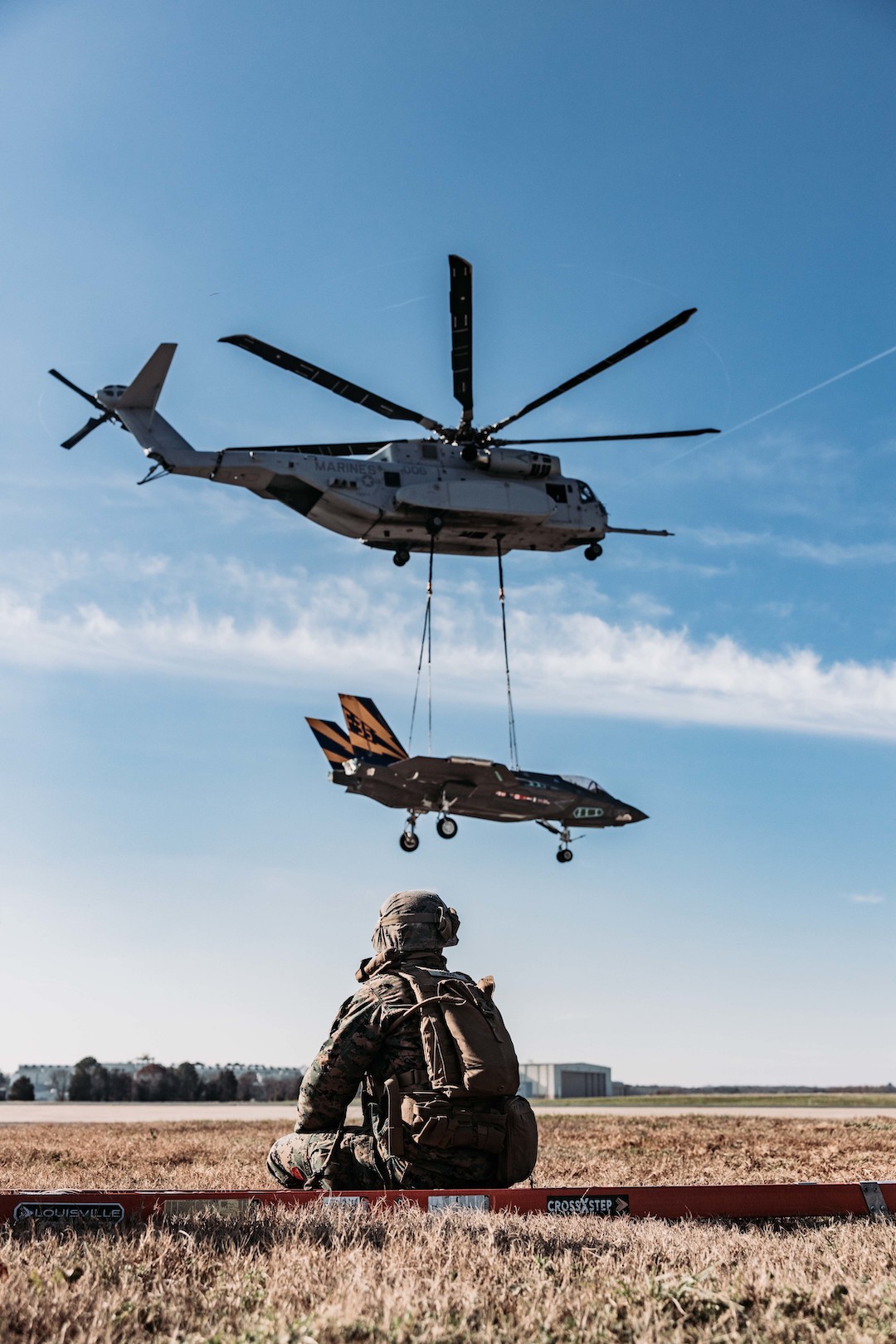
Perhaps more than this, it’s the CH-53K’s ability to lift other military aircraft that showcases its capabilities. This is something that many other helicopters can’t do. Indeed, the CH-53K’s first ‘real’ mission involved lifting a crashed MH-60S Seahawk in California in 2021, which you can read about here. The CH-53K can also lift heavier objects for longer distances compared to its predecessor. Externally, it is designed to carry up to 27,000 pounds over a distance of 110 nautical miles in a high and hot environment. This is compared to the CH-53E’s ability to carry 9,654 pounds over the same distance.
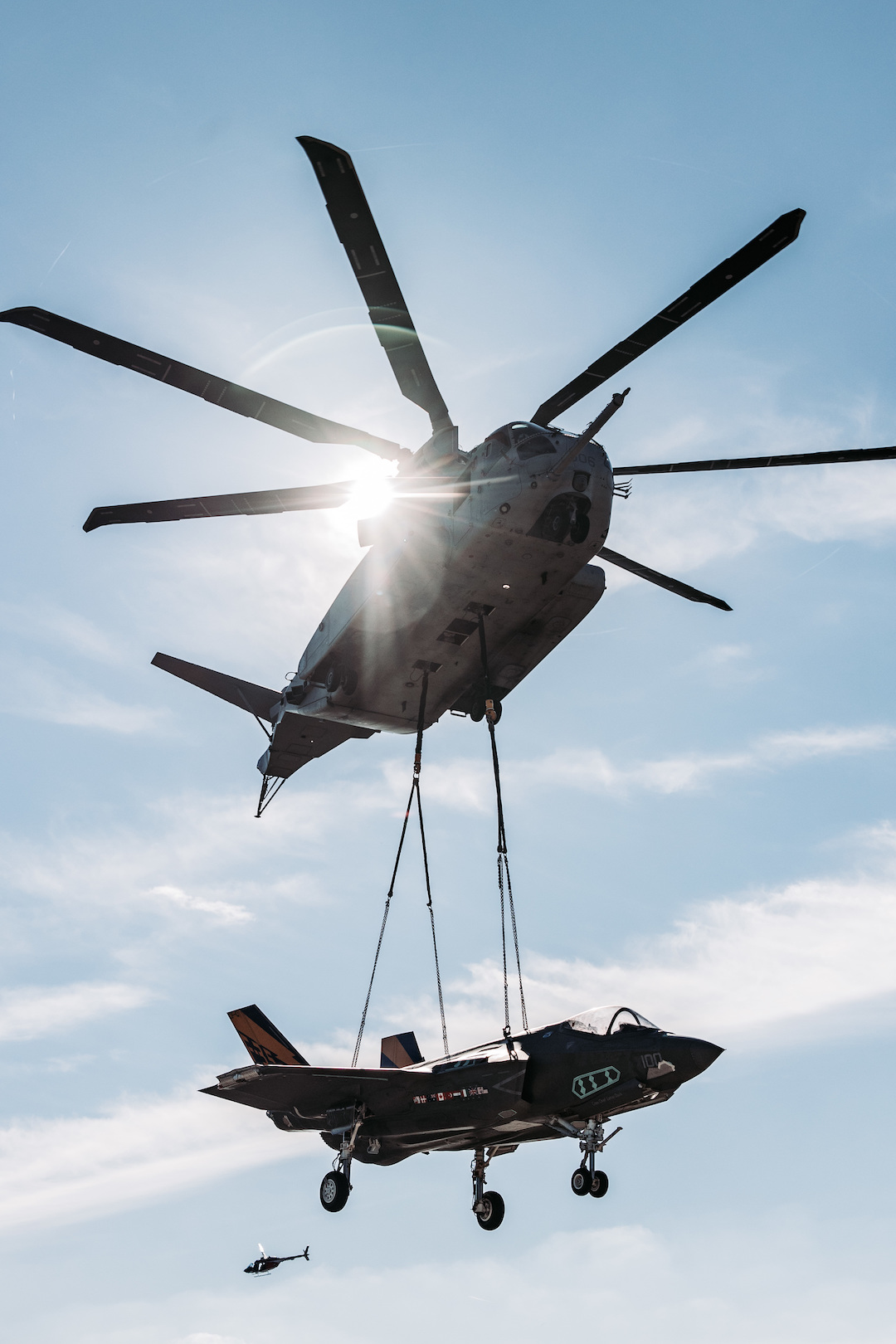
According to the Department of Defense image captions, the demonstration comes as the USMC “modernizes and prepares to respond globally to emerging crises or contingencies.” There are many operational contexts in which moving F-35s via CH-53Ks could be useful for the Marines. Having the ability to transport F-35s out of austere locations could be significant in an island-hopping war in the Indo-Pacific, namely against China. Here, damaged or broken-down F-35Cs and Bs, prized assets full of sensitive technology, could be plucked from remote islands via CH-53Ks.
But being able to lift F-35Cs is useful outside of the Pacific context in terms of aircraft recovery more generally. It’s well known that CH-53s have been key aircraft recovery assets for decades now.
We’ll be keeping our eyes peeled for what the USMC’s CH-53K King Stallion does — and lifts — next. Stay tuned.
Update 4:34 P.M. EST:
Additional information on the demonstration, and new photos, were published in a press release by NAVAIR on January 24. Video footage of the lift was also released, which you can watch below.
According to the release, the “external load certification lift” of the F-35C was designed to “inform future [CH-53K] lift capabilities.” The CH-53K helicopter is currently cleared to conduct a 27,000 pound external lift, and is projected to be cleared for a 36,000 pound external lift. The inoperable F-35C CF-1 airframe and its rigging weighed approximately 22,000 pounds after the removal of its mission and propulsion systems, outer wings, and other equipment. Between 2010–2016, the F-35C CF-1 accrued 750 flight hours during 450 tests.

The release also states that the NAS Patuxent River F-35 Integrated Test Force (ITF) test team and NAVAIR’s Cargo Lab also helped to ensure the lift was a success. Various tests and reports were completed before the lift took place – which included load certification testing, sling configuration analysis, and the documentation of cargo characteristics. Moreover, an earlier crane test lift verified the sling, rig, pitch and bank attitudes of the jet, and control surface states.
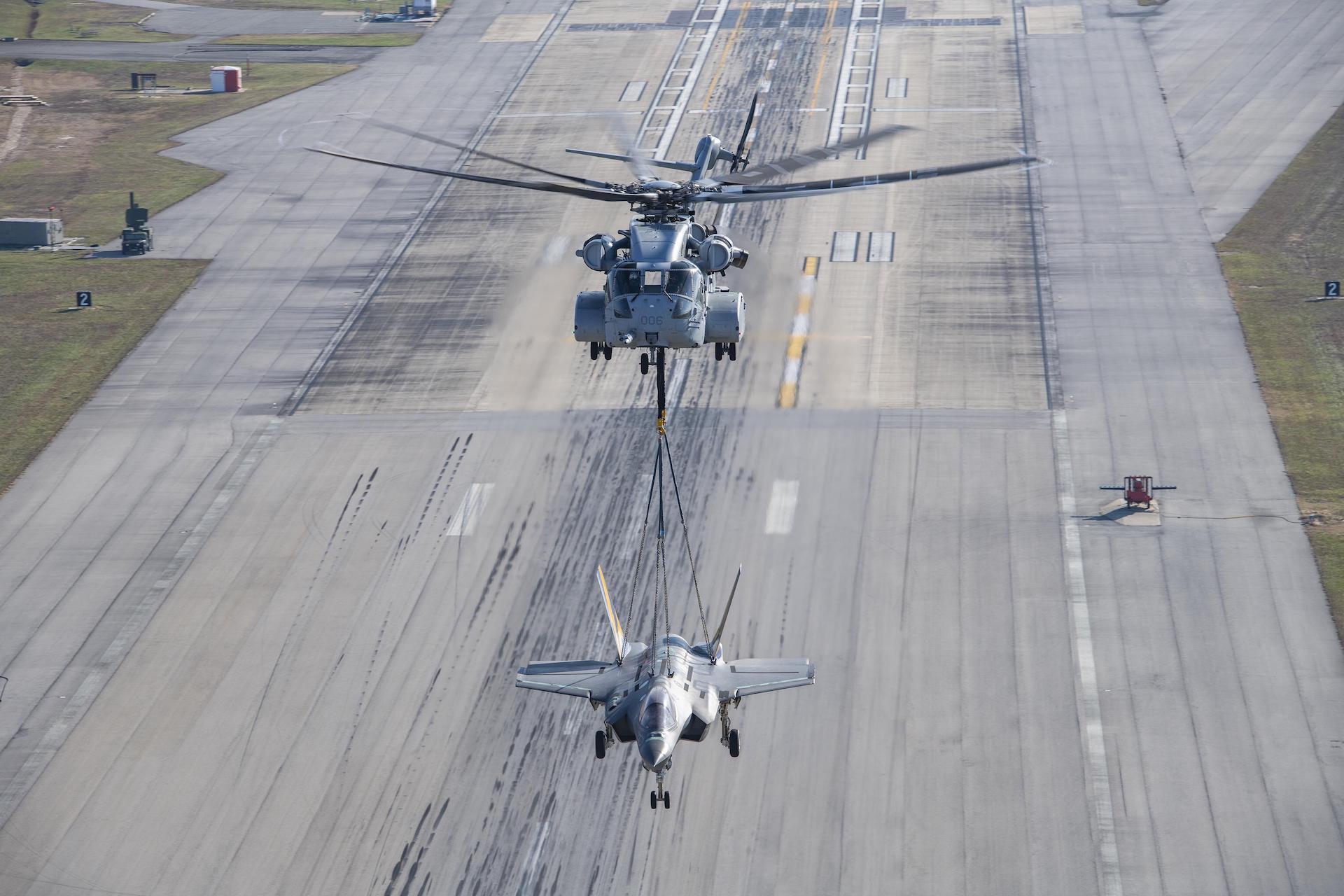
Contact the author: oliver@thewarzone.com
